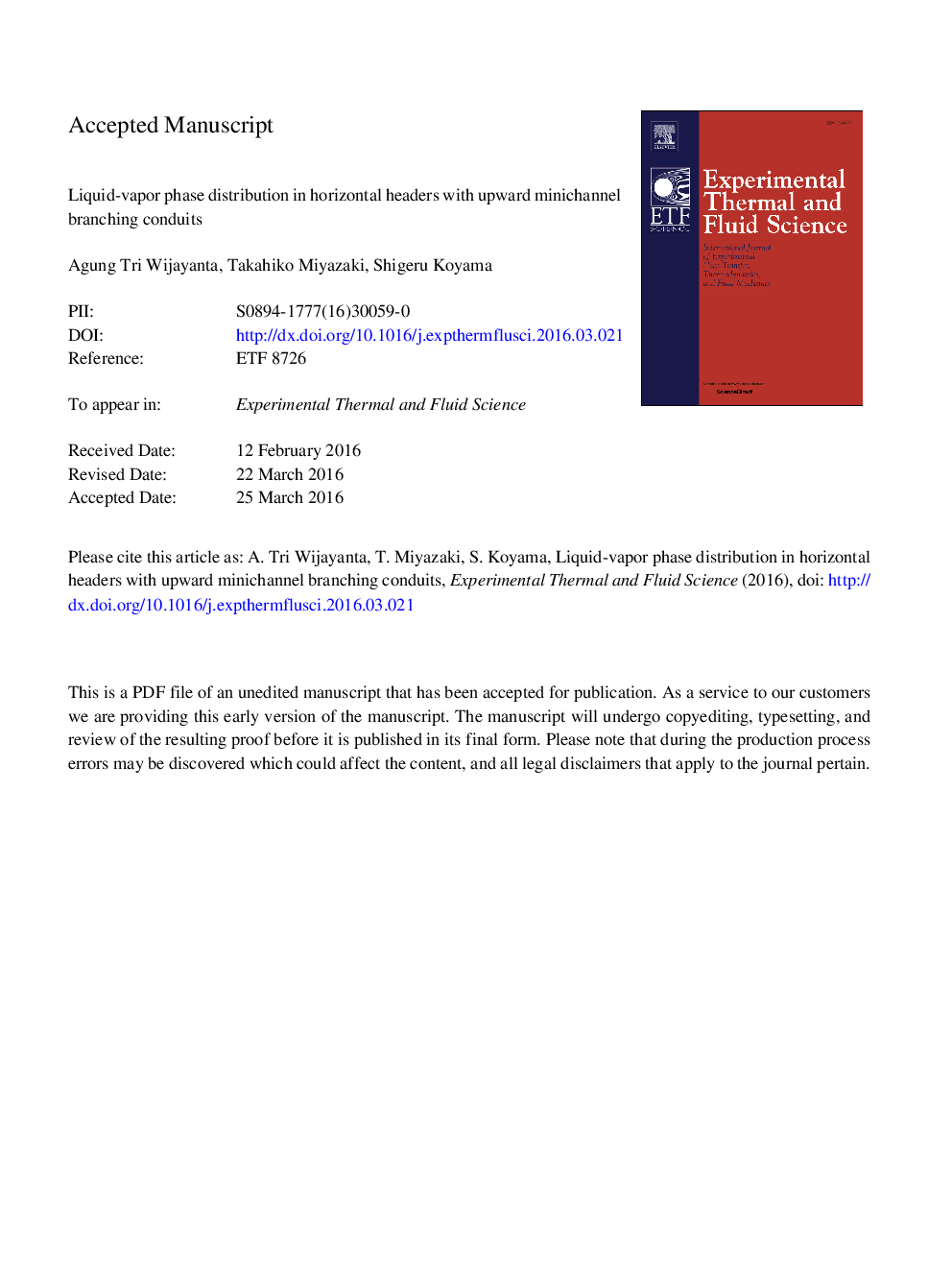| Article ID | Journal | Published Year | Pages | File Type |
|---|---|---|---|---|
| 7052028 | Experimental Thermal and Fluid Science | 2016 | 56 Pages |
Abstract
Since the refrigeration system based on carbon dioxide (CO2) as a refrigerant is near ideal, liquid-vapor phase distribution in a header type evaporator applied for CO2 has been experimentally investigated. The test section consists of a horizontal header and 3, 6 or 8 vertically upward replaceable branching conduits. The header is made of transparent polyvinyl chloride (PVC) resin for observing the flow regime, and each conduit is composed of an aluminum disk plate and an aluminum minichannel-branching conduit. In order to develop the lowest maldistribution header, several headers with various insertion depths are examined. Since the CO2 system operates at around the supercritical conditions, it is a little bit difficult to observe the flow regime for CO2 at high pressure, therefore, R134a is used as the alternative working fluid in this study. Similarity hypothesis between CO2 and R134a is proposed. The modified Baker flow pattern map (refer to Scott, 1963) is applied to define the equivalent experimental conditions for both R134a and CO2. R134a headers are tested and the experimental work is applicable to CO2. The R134a experiments were conducted at saturation temperature of about 21 °C, refrigerant mass flow range between 10 and 30 kg/h which corresponds to about 44 and 130 kg/m2 s in the 9 mm i.d. header, and average vapor quality in the test section inlet of about 0.1, 0.2, 0.3 and 0.4. The R134a vapor-liquid phase mass flows entering into the branches were measured. The predicted flow regimes at each branch inlet in the header, predicted using flow pattern map in the form of vapor quality as the abscissa versus mass velocity as the ordinate refer to Wojtan et al. (2005), were utilized to understand the observation of phase separation. The liquid-vapor phase distribution of CO2 was estimated based on the R134a experimental result.
Related Topics
Physical Sciences and Engineering
Chemical Engineering
Fluid Flow and Transfer Processes
Authors
Agung Tri Wijayanta, Takahiko Miyazaki, Shigeru Koyama,
